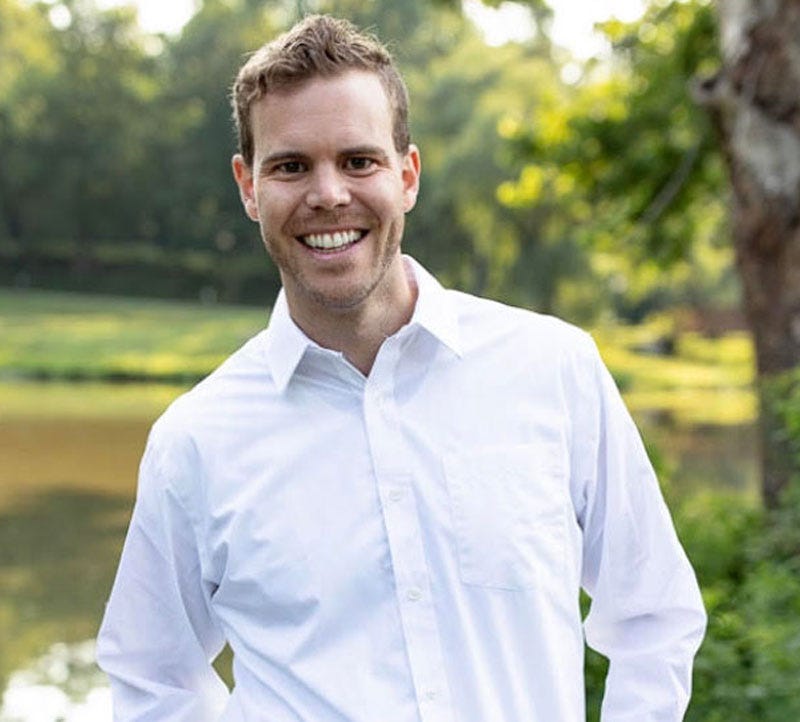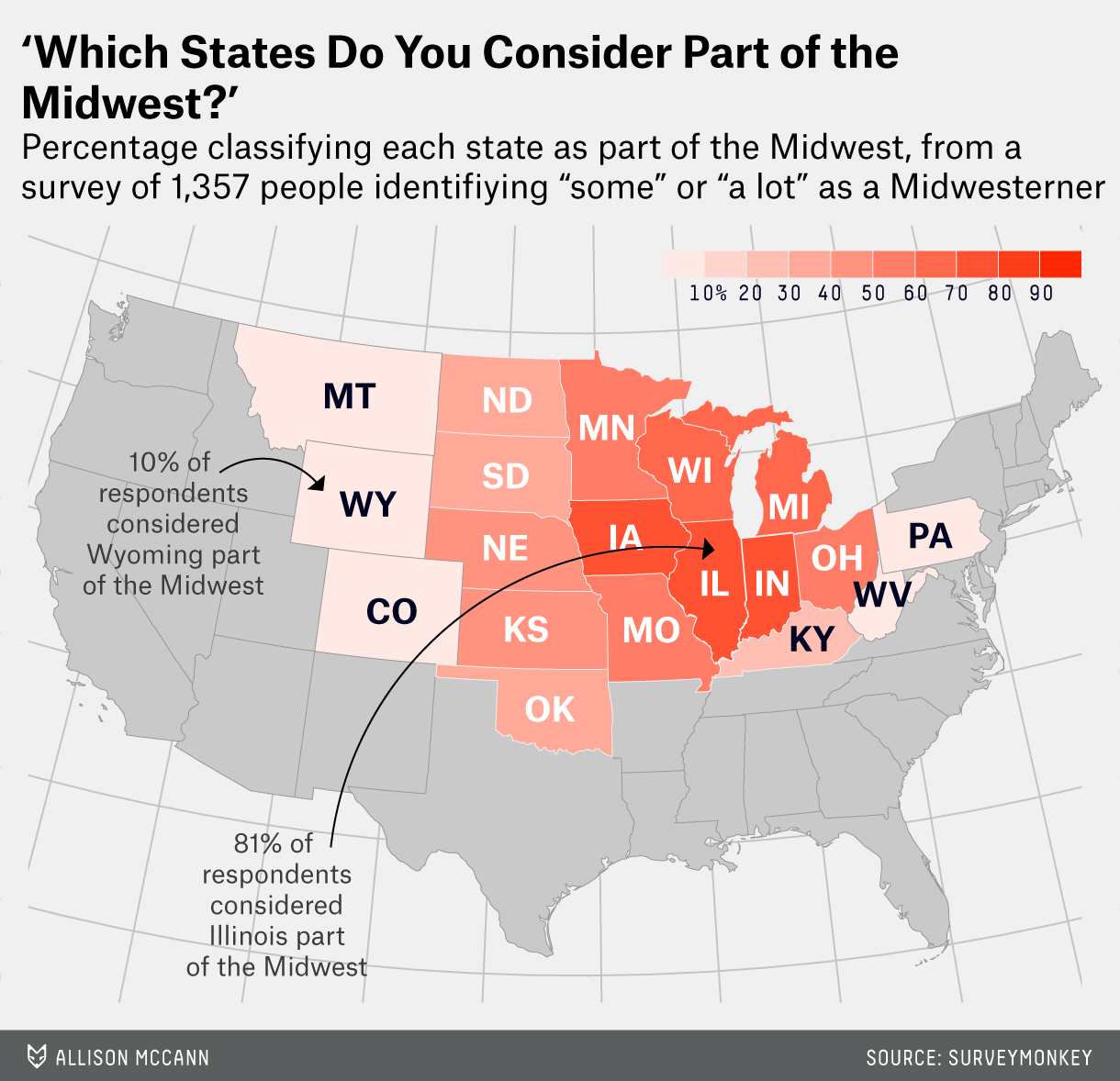Hello! Welcome to another edition of Inside The Newsroom, where today’s guest is… U.S House of Representatives candidate from Ohio’s 5th district Nick Rubando. Nick must defeat two other Democrats in tomorrow’s primary in order to face Republican incumbent Bob Latta in November’s general election. Above is the podcast, below is a post-game of everything we talked about and more. Enjoy! 🤓
Nick 👇

Like Me, Please
Before you read on, please like this edition of Inside The Newsroom by clicking the ❤️ up top. That way I’ll appear in clever algorithms and more people will be able to read. Cheers.
Who is Nick Rubando?
Nick was born just outside of Toledo, and is running for the U.S. House of Representatives out of Ohio’s 5th district. He studied journalism at Indiana University and volunteered for Barack Obama’s 2008 campaign, which is the only time Indiana has voted blue since 1964 when Lyndon B. Johnson defeated Barry Goldwater (more on him later). After a few years working for a tech startup in California, Nick moved back home and is running on a platform that includes Medicare For All, the Green New Deal and creating new jobs in his district, Ohio and the entire Midwest. Nick must defeat two fellow Democrats in tomorrow’s primary in order to face Republican incumbent Bob Latta, who has held this seat since 2007 and won in 2018 by 27 points. Latta has voted with Donald Trump 96 percent of the time including voting against providing disaster aid for Puerto Rico and voting against allowing the federal government to negotiate lower drug prices.
Midwestern Politics is Weird
Having lived in both Ohio and Indiana, Nick has a good grasp of each state’s politics, specifically why each state is so different. As previously mentioned, Indiana has voted for the Democratic Party just twice in 14 elections since 1964, while Ohio has voted blue six times and red eight times. Ohio is an out-and-out swing state and like the saying, “As Ohio goes, so goes the nation”, referring to the fact that Ohio has voted for every eventual president since 1964. So why is Ohio so different to its neighbour Indiana?
I asked Nick this very question and he referenced the fact that Indiana has just two cities with a population of more than 250,000 people — Indianapolis and Fort Wayne. Meanwhile Ohio has four metropolitan equivalents — Columbus, Cincinnati, Cleveland and Toledo. Granted this is a small sample size, but Nick is onto something and it’s not anything new. In their 1970 book The Real Majority, political demographers Richard Scammon and Ben Wattenberg identified the American “Middle Voter”, the person who is metropolitan “middle-aged, middle-income, middle-educated, Protestant, in a family whose working members work more likely with hands than abstractly with head.” To put it simply, Ohio has far more Middle Voters in its metropolitan hubs than Indiana.
Where Even is the Midwest?
Good question. When I first arrived at Mizzou for grad school, I was pretty sure Missouri was at the heart of the Midwest. But weekend trips to Chicago and Indianapolis left me incredibly confused. Turns out I’m not alone and the good folks up in Montana are even more confused. In fact, respondents of FiveThirtyEight’s survey of who’s in the Midwest named a whopping 19 states they classed as being in the Midwest. Side note: My time in Austin taught me that Texas isn’t part of the South despite its obvious geographic proximity, in the south. No, Texas is its own region altogether.

The point here, together with how much Ohio and Indiana politics differ, is that each state is far different to the one next to it. That may seem a simpleton statement, but when politicians and traditional media outlets give labels such as the Midwest, the Rustbelt, or the South, they do an injustice to the viewers who miss out on all the nuances and intricacies within every single city, county and state.
Coronavirus Protests
What do you get when you have a nationwide lockdown, a battered economy and a depressingly divided nation? Yep, you guessed it, protests! Rightwing extremists and conspiracy theorists like Alex Jones have grabbed the majority of the headlines due to their anti-science stances. But the most interesting development here is that many of these protests are taking place in states with Republican governors.
Take Ohio, for example, whose governor is a Republican, and has seen protests to reopen the economy. But Mike DeWine has overall done a decent job in limiting the spread of the virus. He was the first governor to postpone the Democratic and Republican primaries on March 17 while Arizona, Florida and Illinois all went ahead with theirs, and Ohio was one of the first states to issue a stay-at-home order on March 22, which has since been extended until at least May 1. Protests have also taken place in Texas and Maryland, whose governors Greg Abbott and Larry Hogan are also both Republican. It’ll be fascinating to see how they manoeuvre growing unrest as the months count down to November’s election.
Voting in the Age of Coronavirus
The coronavirus has exposed many elements of our institutions and systems that are hopelessly antiquated. One of those systems is the way we vote and hold elections. Why is it that with all the endless technology and innovation in our world that it’s taken the worst global pandemic in 100 years for postal and absentee voting to be an actual thing. In many states pre-coronavirus, you had to have damn good reason not to show up to the polls yourself to cast your vote. For a lot of voters, that meant taking time off work, arranging childcare and even travel more than 100 miles because of a lack of polling stations.
Tomorrow’s primary in Ohio will eliminate most in-person voting, allowing those who didn’t vote in the original March 17 primary to vote by mail. According to analysis by The Guardian, only Colorado, Oregon and Washington allowed people to vote by mail without needing a special excuse before the pandemic. Yes, other problems have arisen due to the postal service being overrun at a time of emergency, but that’s simply not good enough. Hopefully permanent postal and absentee voting will be one small silver lining that’s here to stay once the pandemic is over.
The Legacy of Barry Goldwater
Despite being dead for more than 20 years, Barry Goldwater’s legacy is still felt today. Goldwater served five terms as a Republican senator from Arizona, and is most infamous for being on the wrong side of one of the largest landslides in U.S. presidential history, losing to Lyndon B. Johnson by 23 percent nationally and carrying just six states for a measly 52 collegiate votes. Like I’ve said in the past, Trump didn’t create the extreme divide we have in America today, he’s merely a symptom, and looking back to Goldwater’s rise to the top can help us figure out how more than 50 years later we got Trump. The main difference between the two was that Goldwater was a lifelong Republican who rose to the top of the party from the bottom up, while Donald Trump took over the GOP from top down. But in that difference is actually a trait of similarity between the two…
Goldwater and Trump will go down in history as nonconformists who spoke their mind and weren’t afraid of calling out members of their own party. Trump infamously barraged every Republican that stood in his way in 2016, and even slammed party hero John McCain for being captured as a prisoner of war. Similarly, Goldwater led the party’s rebellion against then GOP President Richard Nixon during his impeachment scandal over Watergate. On August 6, 1974, Goldwater told Nixon to his face that House and Senate Republicans would no longer defend him and stand in the way of his inevitable impeachment. A day later, Nixon resigned. It makes you think that if the media landscape had been as fragmented and decentralised as it is today, would Goldwater’s message have resonated more around the country, had communication not have been centralised by a handful of media outlets? I guess we’ll never know…
Coming up …
#74 — Major Garrett (CBS) on what it’s like being a White House correspondent in the age of Donald Trump
Job Corner
Sign up to the Inside The Newsroom Job Board for weekly updates to more than 500 journalism jobs, internships and freelance gigs in the U.S., UK and around the world.
Thanks for making it all the way to the bottom. Please like and share this edition of Inside The Newsroom by clicking the ❤️ below. That way I’ll appear in clever algorithms and more people will be able to read.
If you haven’t already, please consider subscribing to get a newsletter about a cool news topic in your inbox every time I publish. You can find me on Twitter at @DanielLevitt32 and email me corrections/feedback or even a guest you’d like me to get on the podcast at daniellevitt32@gmail.com.














Share this post